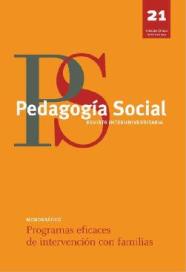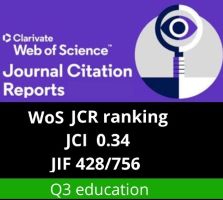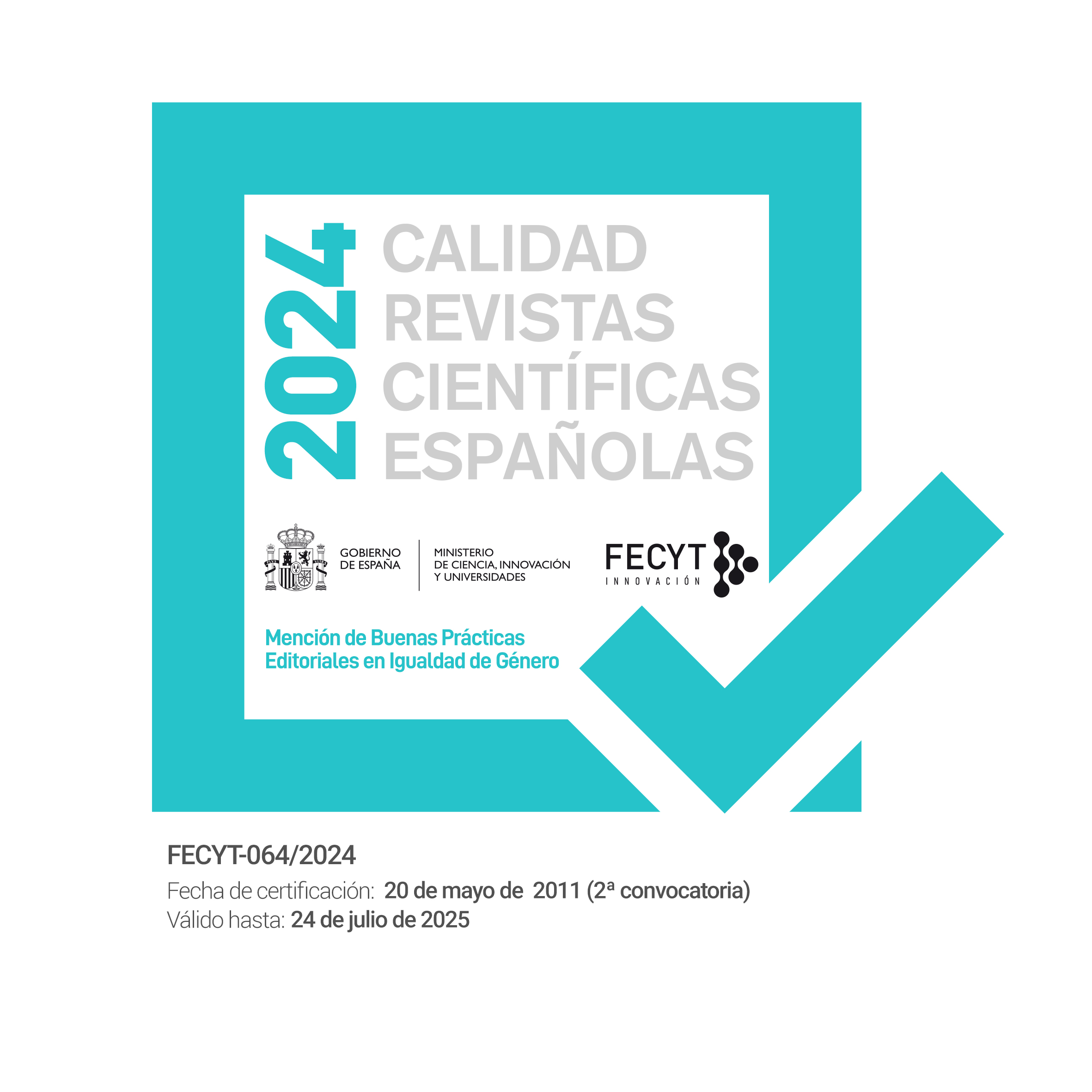Centros de Trabajadores Inmigrantes en el Este de Massachusetts, EUA: Fomentando Servicios, Apoyo, Defensa, y Organización Comunitaria
DOI:
https://doi.org/10.7179/PSRI_2013.21.07Palabras clave:
Centros de Trabajadores Inmigrantes, Derechos de los Trabajadores, Justicia Social, Acción Directa, Organización ComunitariaResumen
Este trabajo de investigación tuvo como propósito examinar cómo los Centros de Trabajadores Inmigrantes (CTI), localizados en la parte Este del Estado de Massachusetts (EU), están estructurados en torno a doce dimensiones de desarrollo organizativo y organización comunitaria. Métodos cualitativos de investigación fueron utilizados en este estudio para identificar temas comunes entre los seis CTI y las tres organizaciones de apoyo a inmigrantes, así como sus respuestas organizativas en el actual ambiente anti-inmigrante. Los CTI constituyen una muestra de conveniencia, lo que permitió a los investigadores recopilar datos usando la metodología de estudio de caso. Entrevistas semi-estructuradas en profundidad se realizaron entre los meses de Julio y Septiembre de 2009 para responder a las siguientes preguntas de investigación: 1) ¿Cuáles son los temas comunes para el desarrollo de los CTI?, y 2) ¿Cómo responden los CTI al actual sentimiento anti-inmigrante, las políticas de migración intolerantes, y a la creciente explotación en esta economía en problemas? Los temas comunes entre los CTI incluyen dar prioridad a la organización comunitaria para defender los derechos de los trabajadores y el empoderamiento colectivo. Sub-modalidades como la educación, la formación y el desarrollo de liderazgo son una característica común. Se proporciona apoyo individual, y en algunos casos la programación, siempre en un contexto que hace hincapié en la necesidad de la acción colectiva para superar la injusticia. Los temas tratados incluyen la salud / seguridad, el acoso sexual, discriminación, y varios problemas asociados con los salarios (insuficiente, pagos atrasados, salarios caídos, y la falta de pago de horas extras). Los CTI responden a las políticas y prácticas anti-inmigrantes mediante el apoyo a esfuerzos más amplios para lograr una reforma migratoria a nivel municipal, estatal y federal. Las coaliciones de CTI y sus aliados intentan realizar cambios en las políticas a nivel estatal y federal mediante el uso de una variedad de tácticas organizativas, incluyendo el cabildeo legislativo, eventos de prensa, mítines, marchas, vigilias y una variedad de acciones directas.Descargas
Citas
Alinsky, S. (1971). Rules for radicals: A practical primer for realistic radicals. New York: Vintage Books.
Bobo, K., Kendall, J. & Max, S. (2001). Organizing for social change (Third Edition). Washington: Seven Locks Press.
Boehm, A. & Staples, L. (2005). Grassroots leadership in task-oriented groups: Learning from successful leaders. Social Work with Groups, 28(2), 77-96.
http://dx.doi.org/10.1300/J009v28n02_06
Brueggemann, W. G. (2002). The practice of macro social work (2nd ed.). Belmont, CA: Brooks/Cole.
Calderon, J., Foster, S. & Rodriguez, S. (2003). Organizing immigrant workers: Action research and strategies in the Pomona Day Labor Center. Paper presented at the annual meeting of the American Sociological Association, Atlanta, GA.
Daley, J. (2002). An action guide to nonprofit board diversity. Journal of Community Practice, 10(1), 35-54.
http://dx.doi.org/10.1300/J125v10n01_03
Ephross, P. & Vassil, T. (2005). Groups that work: Structure and process (Second Edition). New York: Columbia University Press.
Etxeberria, F., Arrieta, E., Garmendia, J., y Imaz. J. (2009). Empleabilidad y formación de inmigrantes. Pedagogía Social, Revista Universitaria, 16, Tercera Epoca, Marzo, 63-74.
Fine, J. (2006). Workers centers: Organizing at the edge of the dream. Ithaca, NY: ILR Press.
Freire, P. (1970). Pedagogy of the oppressed. New York: Seabury Press.
Freire, P. (1973). Education for critical consciousness. New York: Seabury Press.
García, M. y Sánchez, A. (2005-2006). La integración de inmigrantes en Espa-a: el caso de Jumilla. Pedagogía Social, Revista Universitaria, 12-13, (Segunda Epoca), 193-207.
Marshall, T. (1950). Citizenship and social class, and other essays. Cambridge, UK: Cambridge University Press.
Milkman, R. (2006). Labor and the new immigrant rights movement: Lessons from California. New York: Russell Sage Foundation.
Mondros, J. & Staples, L. (2008). Community organization. In T. Mizrahi & L. Davis (Eds.), Encyclopedia of Social Work, 20th Edition. New York: Oxford University Press.
Nguyen, T. (2005). We are all suspects now: Untold stories from immigrant communities after 9/11. Boston: Beacon Press.
Passel, J. & Cohn, D. (2008). Trends in unauthorized immigration: Undocumented inflows now trail legal flow. Washington, D.C.: Pew Hispanic Center. Retrieved from www.pewhispanic.org
Passel, J., & Suro, R. (2005). Rise, peak and decline: Trends in U.S. immigration 1992-2004. Washington, DC: Pew Hispanic Center.
Reynoso-Vallejo, H., Miranda, C., y Staples, L. (2009). Capital social y organización comunitaria con inmigrantes de bajos ingresos en Chelsea, Massachusetts, EE.UU. En X. Ucar, (ed). Enfoques y experiencias internacionales de acción comunitaria en Espa-a, Israel, Finlandia, Estados Unidos de América y Brasil. Grao: Barcelona, Spain.
Rothman, J. (1969). An analysis of goals and roles in community organization practice. In R. Kramer and H. Specht (Eds.), Readings in community organization practice (pp. 49–61). Englewood Cliffs, NJ: Prentice Hall.
Rothman, J. (2001). Approaches to community intervention. In J. Rothman, J. L.Erlich, & J. E. Tropman (Eds.), Strategies of community intervention (6th ed., pp. 27-64). Itasca, IL: F. E. Peacock.
Rubin, H. J. & Rubin, I. S. (2005). Community organizing and development, 4th ed. Boston: Allyn and Bacon.
Scarpa, P, y Corrente, M. (2006). La dimensión europea del Educador/a Social. Pedagogía Social. Revista Universitaria, 14, (Tercera Epoca), 63-74.
Sen, R. (2003). Stir it up. San Francisco: Jossey-Bass.
Staples, L. (2004). Roots to power (Second Edition). Westport, CT: Praeger.
U.S. Census Bureau. (2000). Profile of selected social characteristics: United States. Retrieved from http://factfinder.census.gov.
U. S. Bureau of Labor Statistics. (2007). Foreign-born workers: labor force characteristics. Retrieved from http://www.bls.gov/news.release/pdf/forbrn.pdf
Weil, M. (Ed.). (2012). The Handbook of Community Practice. Second Edition. Thousand Oaks: Sage Publications.
Zamora, J. (2001). Inmigración: reto a la democracia. Pedagogía Social. Revista Universitaria, 8, (Segunda Epoca), 53-80.
Descargas
Publicado
Cómo citar
Número
Sección
Licencia
Derechos de autor 2014 Pedagogía social. Revista interuniversitaria

Esta obra está bajo una licencia Creative Commons Reconocimiento-NoComercial 3.0 Unported.
Derechos de reproducción y archivo
La versión publicada de los artículos podrá ser autoarchivada por sus autores en repositorios institucionales y temáticos de acceso abierto. No obstante la reutilización total o parcial de los mismos en nuevos trabajos o publicaciones deberá ser autorizada por Pedagogía Social. Revista Interuniversitaria.
Los trabajos publicados deberán ser citados incluyendo el título de la Revista, Pedagogía Social. Revista Interuniversitaria, nº, páginas y año de publicación.
Responsabilidades éticas
Pedagogía Social. Revista Interuniversitaria no acepta material publicado anteriormente en otros documentos. Los/as autores/as son responsables de obtener los permisos oportunos para reproducir parcialmente material de otras publicaciones y citar correctamente su procedencia. Estos permisos deben solicitarse tanto al autor/a como a la editorial que ha publicado dicho material.
Es obligación de Pedagogía Social. Revista Interuniversitaria detectar y denunciar prácticas fraudulentas.
En la lista de autores/as firmantes deben figurar únicamente aquellas personas que han contribuido intelectualmente al desarrollo del trabajo.
La revista espera que los/as autores/as declaren cualquier asociación comercial que pueda suponer un conflicto de intereses en conexión con el artículo remitido.
Los autores deben mencionar en el manuscrito, preferentemente en el apartado del método, que los procedimientos utilizados en los muestreos y controles han sido realizados tras la obtención de consentimiento informado.
La revista no utilizará ninguno de los trabajos recibidos con otro fin que no sea el de los objetivos descritos en estas normas.
Aviso de derechos de autor/a
© Pedagogía Social. Revista Interuniversitaria. Los originales publicados en las ediciones impresa y electrónica de esta Revista son propiedad del Pedagogía Social. Revista Interuniversitaria, siendo necesario citar la procedencia en cualquier reproducción parcial o total.
Salvo indicación contraria, todos los contenidos de la edición electrónica se distribuyen bajo una licencia de uso y distribución “Creative Commons Reconocimiento-No Comercial 3.0 España” (CC-by-nc). Puede consultar desde aquí la versión informativa y el texto legal de la licencia. Esta circunstancia ha de hacerse constar expresamente de esta forma cuando sea necesario.






